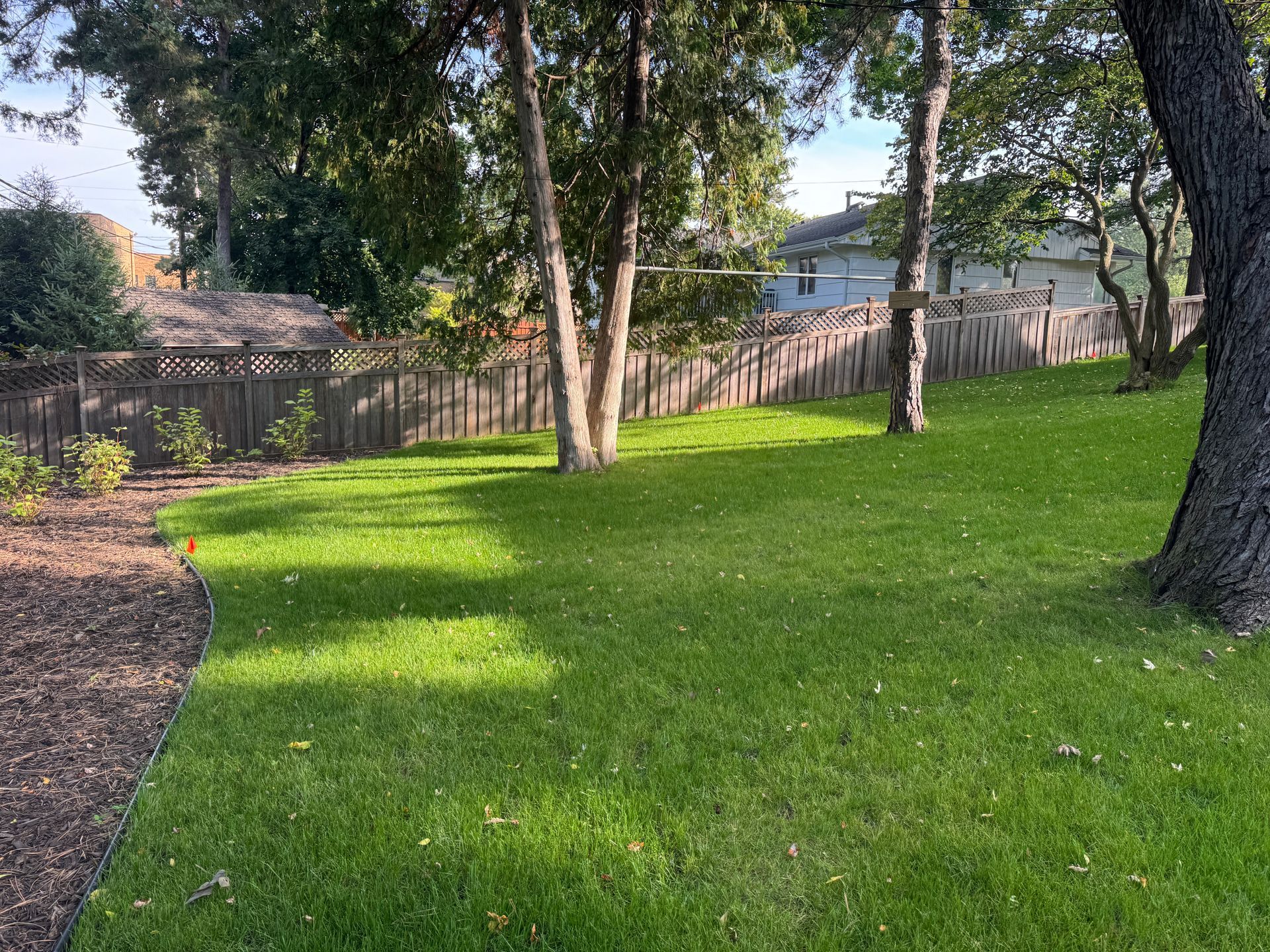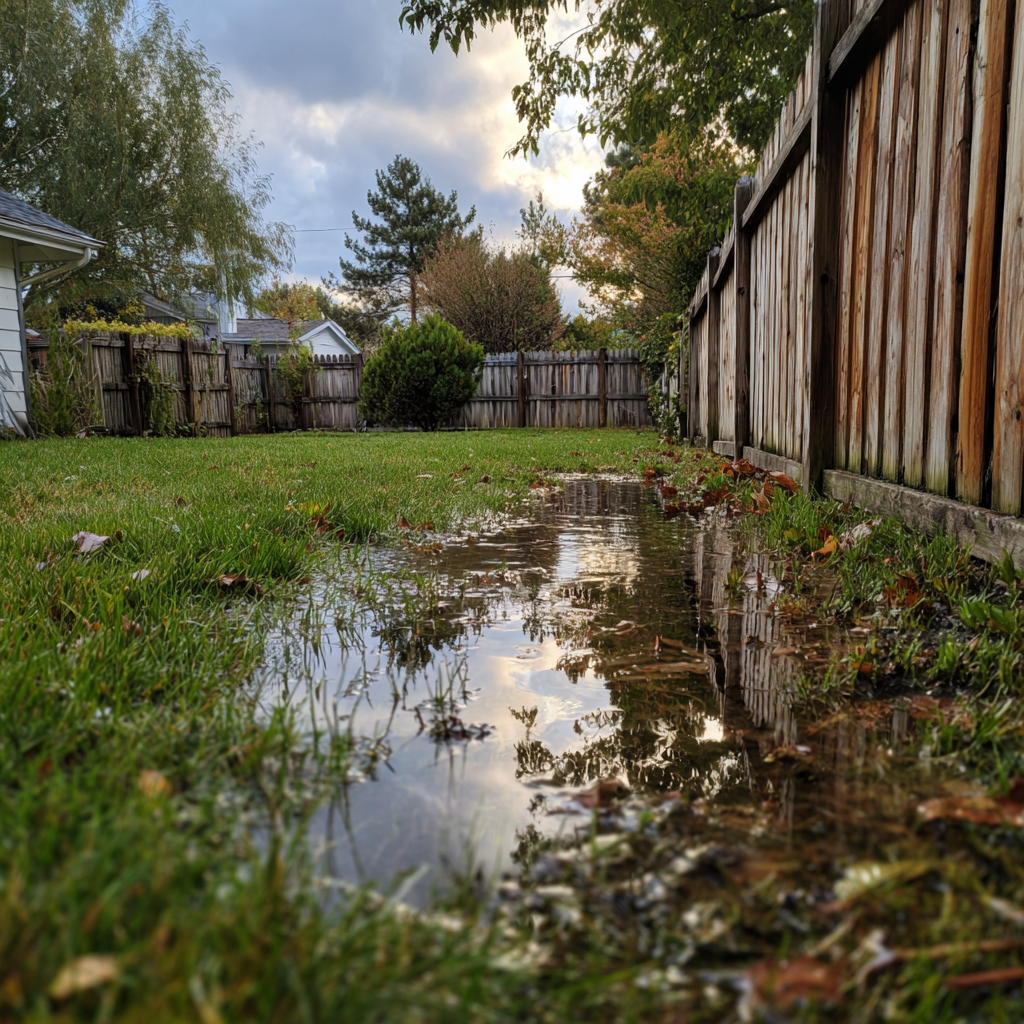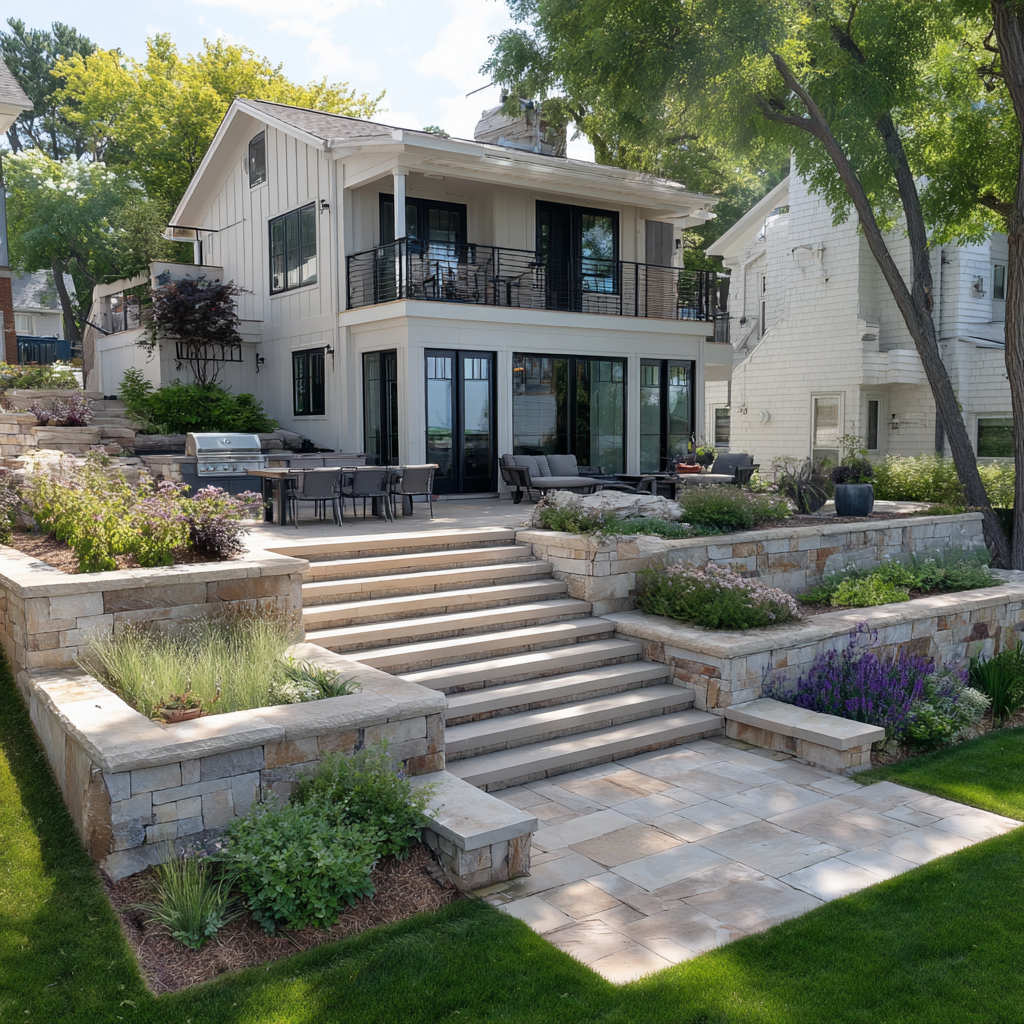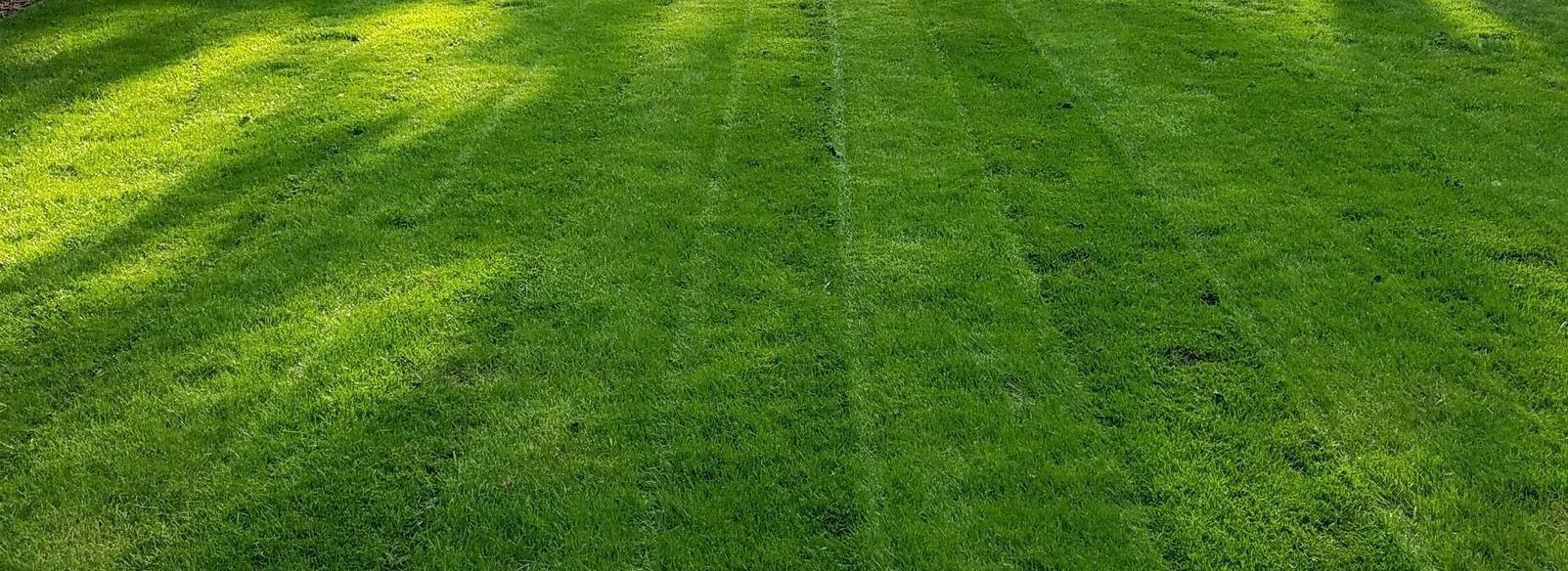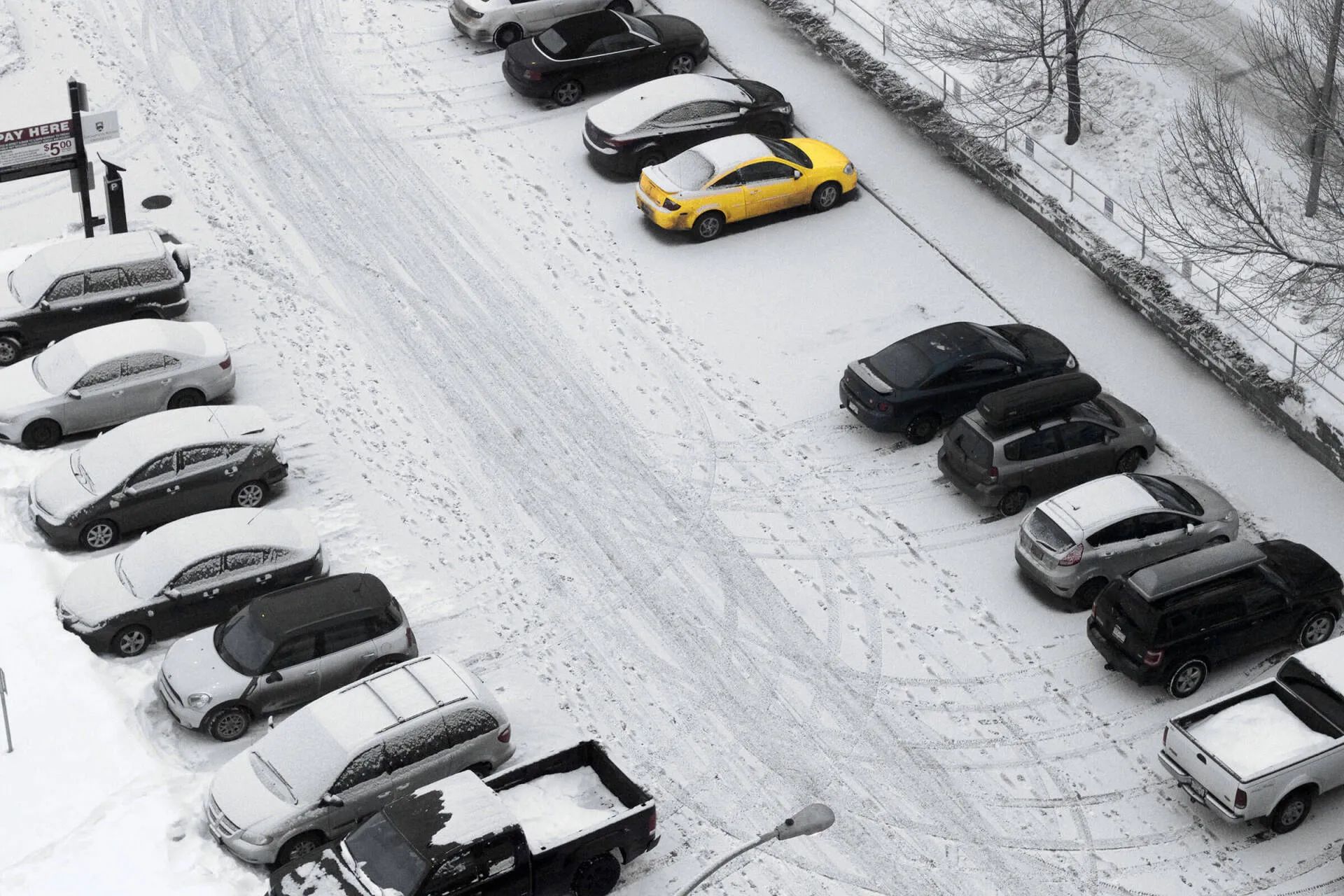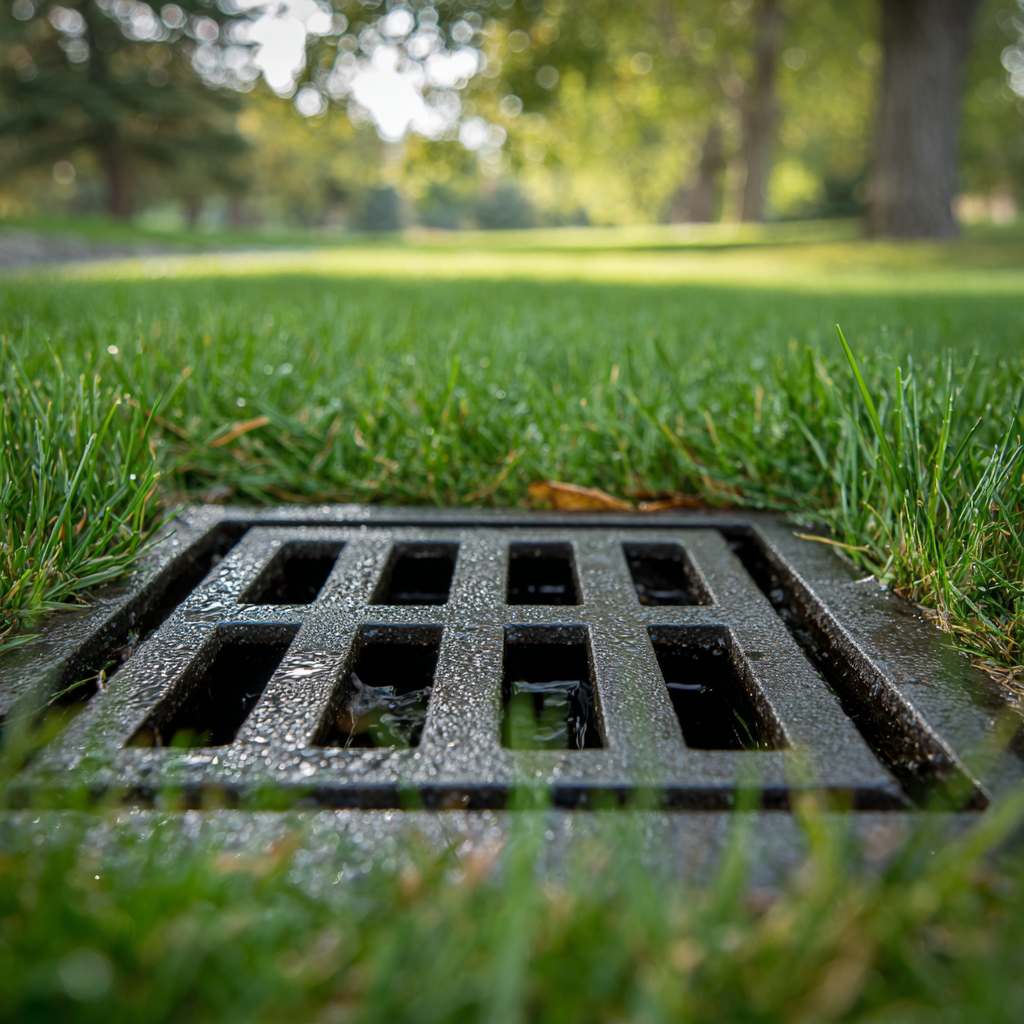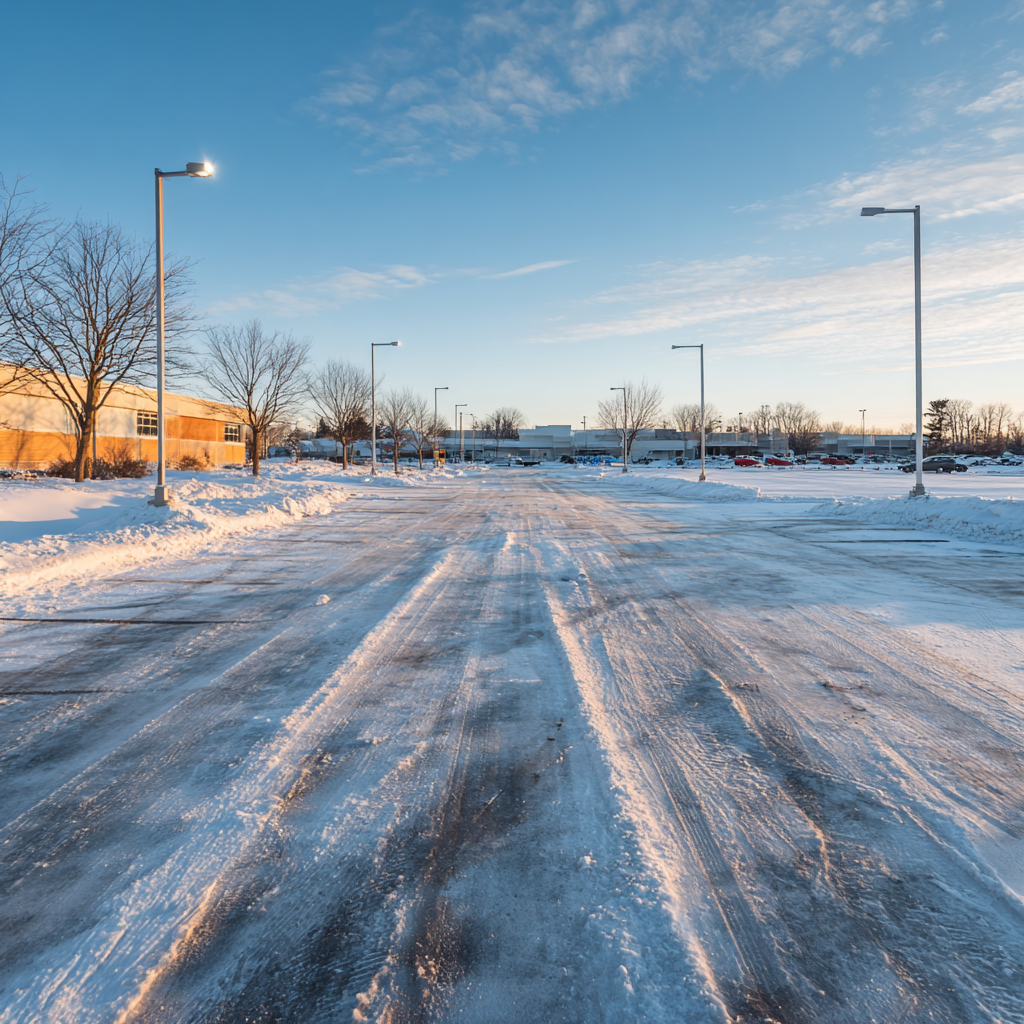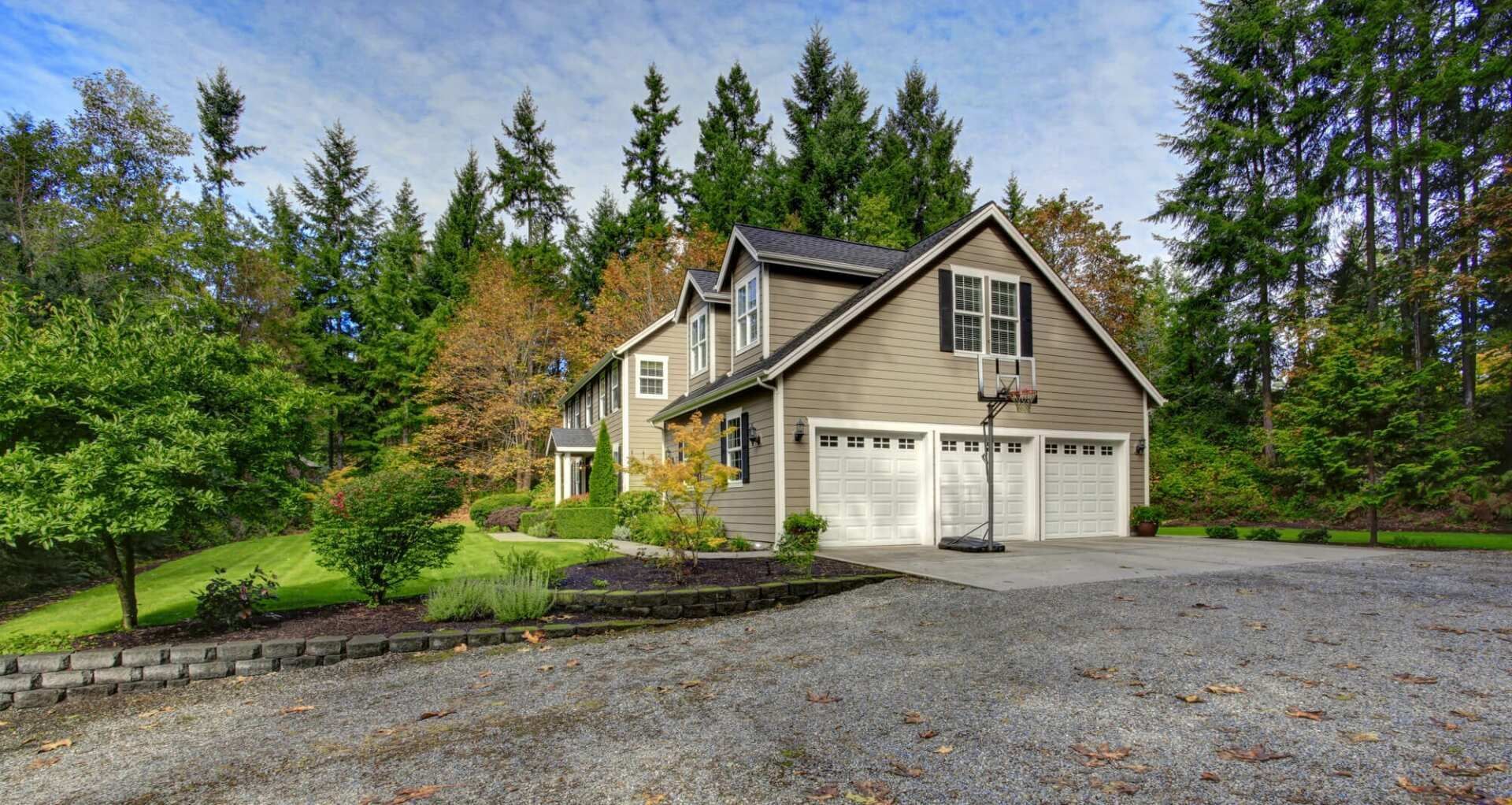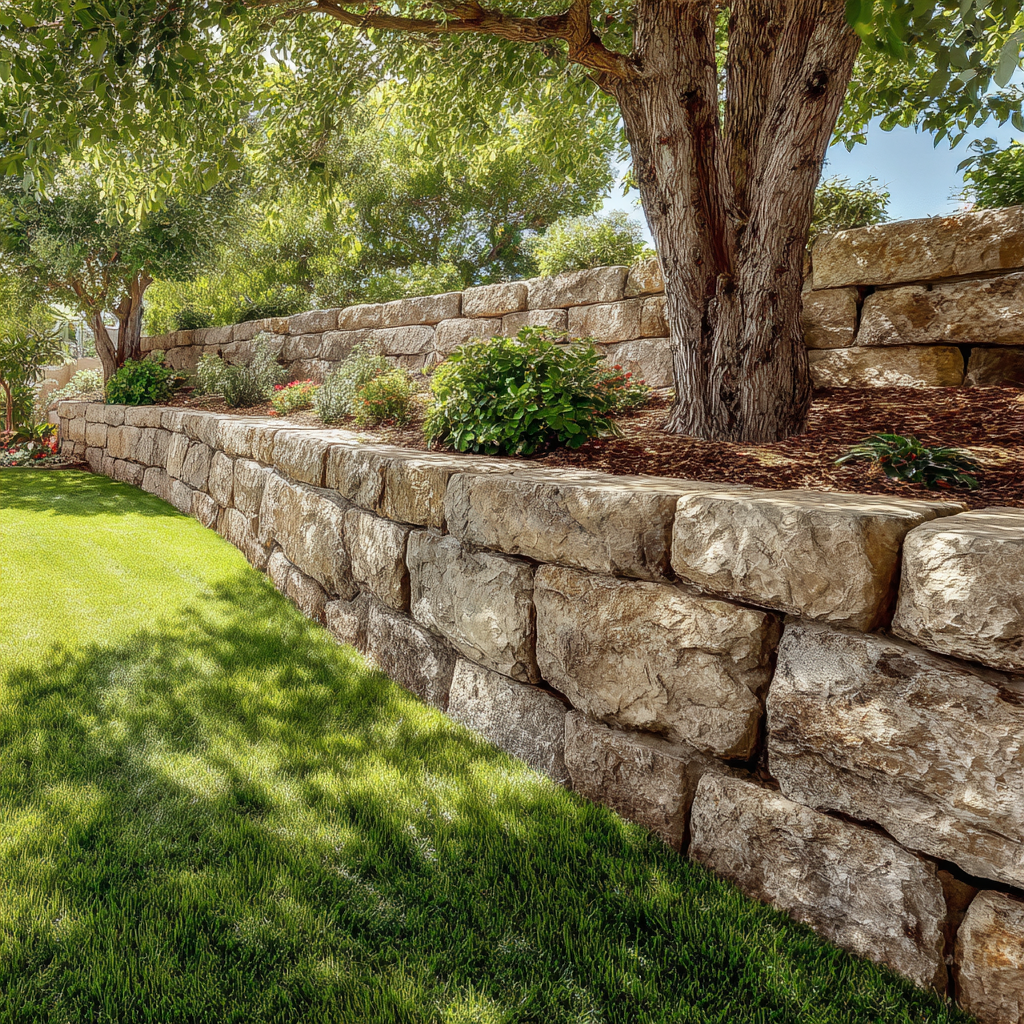Turning Sloped Backyards in Minnetonka into Usable Space
Slopes Look Like Liabilities. In Minnetonka, They’re Hidden Opportunities.
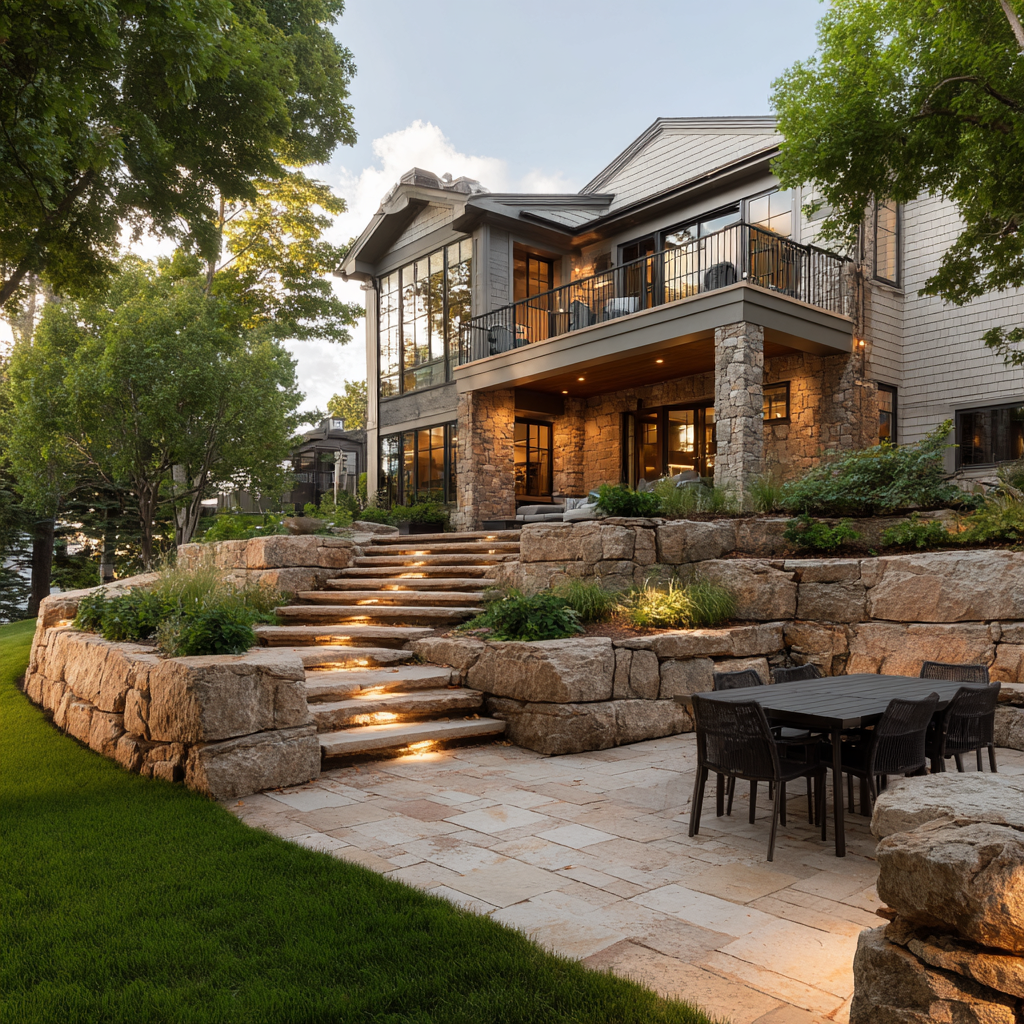
At first glance, a steep backyard in Minnetonka might look more like a burden than a blessing. Slopes can feel unusable—hard to mow, prone to erosion, and dangerous for kids or pets. Families often leave these spaces untouched, writing them off as wasted land.
But here’s the truth: sloped properties often hold more potential than flat lots. With the right design, those steep hillsides can be reshaped into patios, terraces, and lawns that become the most valuable part of the property. Instead of staring at a hill you can’t use, imagine your kids running on a safe, flat lawn or friends gathering on a tiered patio that overlooks the landscape.
Minnetonka’s rolling hills and lakefront terrain make these challenges common. Many homeowners here inherit steep yards that feel intimidating. Some properties even sell at lower prices because buyers see slopes as liabilities. Yet those same slopes often offer the greatest upside: reclaiming them creates usable square footage without needing to add onto the home.
With engineering, creativity, and planning, we can carve terraces into hillsides, build retaining walls that double as seating, and install drainage that protects everything you build. What looks like a liability can quickly become the most livable—and valuable—part of your Minnetonka home.
In this article, we’ll cover:
- Why sloped yards create challenges in Minnetonka
- How retaining walls, grading, and drainage reclaim space
- Creative ways to design terraces, patios, and gardens
- The cost vs. value of slope projects—and why they’re worth the investment
- Practical FAQs homeowners often ask before tackling slope work
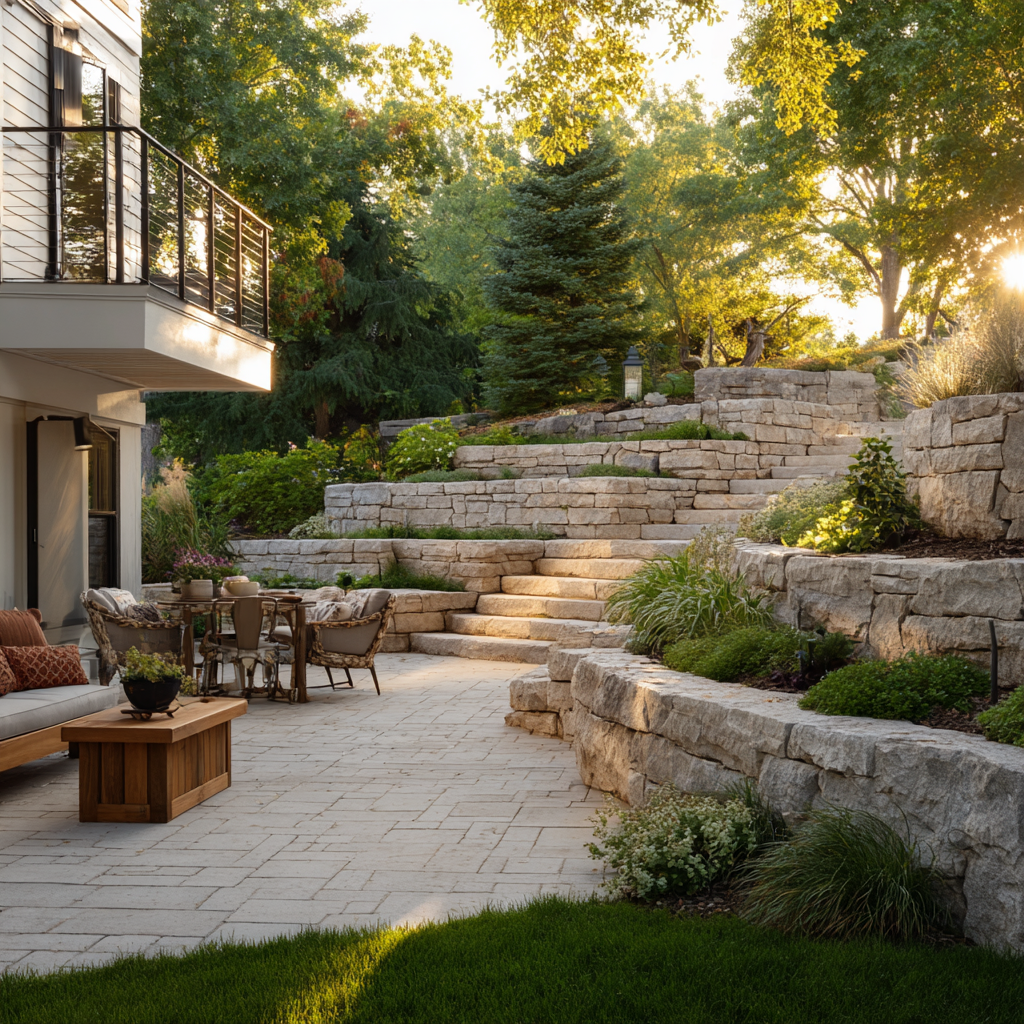
Understanding the Minnetonka Slope Challenge
Minnetonka’s geography creates unique backyard challenges. Many homes are built into rolling hillsides or along the edges of Lake Minnetonka. It’s beautiful terrain, but the slopes leave homeowners with backyards that feel impossible to use.
The problems show up quickly. A sloped yard means you can’t set up a table, build a patio, or even kick a ball around with kids. Slopes also channel water downhill, often directly toward the house. In heavy rains or spring thaws, that runoff puts pressure on basements, siding, and foundations. I’ve seen families deal with constant water pooling along the back of their homes because the natural grade worked against them.
Erosion is another constant battle. Without professional landscaping, clay-heavy soils common in this area wash away with each storm. Grass struggles to take hold, and bare patches slide downhill, leaving ruts that get worse each season. What starts as an aesthetic issue becomes a functional one, with yards losing inches of soil each year.
There’s also the safety factor. A sloped yard isn’t just awkward—it can be unsafe. Kids running downhill risk falls, and icy Minnesota winters turn slopes into slick hazards. Older family members or pets may find it hard to navigate at all.
The irony is that these “problem properties” often come at a discount compared to flat-lot homes. Buyers see the slope as wasted space. But with professional grading, drainage, and walls, that same slope becomes the foundation for a dream backyard. Instead of writing off the land, you’re reclaiming it—adding functional space and protecting the house at the same time.
Pro Tip: Think of a slope as buying potential square footage outdoors. With the right design, you’re reclaiming land you already own.
Retaining Walls: The Backbone of Usable Space
Retaining walls are the first step in turning a slope into something usable. They act as the backbone of the project—literally holding the soil in place so new level areas can be carved out of steep ground. Without them, gravity wins. With them, the hill transforms into safe, flat terraces where families can live, play, and entertain.
There are different ways to use walls depending on the slope and goals. A single large wall can create one wide level lawn, perfect for a play space or expansive patio. On steeper hillsides, multiple terraced walls can break the slope into stages: a lower patio, a middle garden, and an upper lawn. This approach makes the yard feel layered and interesting rather than one stark rise.
Materials matter. Natural stone blends beautifully with wooded lots and lakefront homes. Modular concrete block, engineered for Minnesota freeze-thaw cycles, delivers durability and a clean look. For very steep or tall applications, engineered wall systems may be required, using geogrid and specific backfill techniques to handle soil pressure. The choice isn’t just aesthetic—it affects cost, performance, and lifespan.
In Minnetonka, many homes sit on slopes that face the house. These require walls that do double duty: creating flat areas while also protecting the home itself from runoff. I’ve seen retaining walls integrated into steps, seat walls, and planters so they become features, not just structures. When designed well, they add both function and beauty.
Pro Tip: Retaining walls aren’t just structures—they’re investments in stability, safety, and usable square footage.
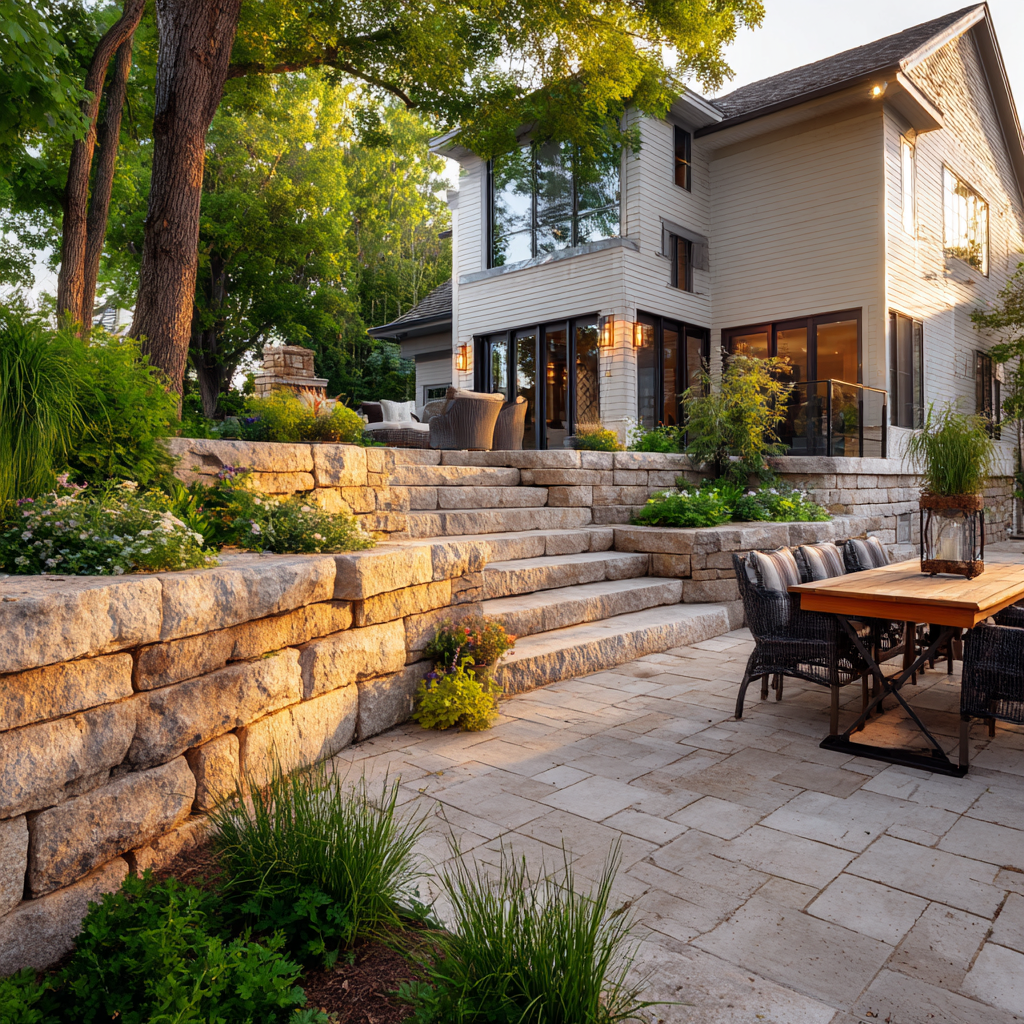
Grading and Drainage: Making Walls Work Long-Term
Even the strongest retaining wall will fail if water isn’t managed. That’s why grading and drainage are non-negotiable. In clay-heavy soils like Plymouth and Minnetonka, water doesn’t soak in—it builds up. Hydrostatic pressure pushes on walls, and without an escape route, that pressure eventually wins.
Professional systems prevent this. Behind each wall, gravel backfill allows water to filter down to perforated drain tile. That tile carries water safely away, often through outlets built into the wall itself or pipes routed downhill. Grading ensures water flows away from the house and into safe discharge zones, not toward basements.
The difference between amateur and professional work is dramatic. DIY or cut-rate walls often skip drainage to save cost. Within a few years, bulging, leaning, or cracked walls appear. I’ve been called in more than once to rebuild walls that were less than five years old simply because drainage wasn’t handled properly.
Local lessons prove the point. Plymouth’s grading standards highlight how critical slope direction is around homes. Edina’s historic neighborhoods struggle with basement moisture because of poor grading over time. Minneapolis’s dense urban lots demand precise runoff control to avoid water affecting neighbors. In Minnetonka, where slopes often run directly toward homes or lakes, the stakes are even higher.
Done correctly, grading and drainage don’t just protect walls—they protect the whole landscape. Patios stay level, lawns stay dry, and basements stay secure. It’s the hidden engineering that makes visible beauty possible.
Pro Tip: A retaining wall without drainage is a wall waiting to fail. Proper grading and water management double the lifespan of your investment.
Creative Design Possibilities for Sloped Yards
Once the slope is stabilized, creativity can take over. Terraces and level areas aren’t limited to flat lawns. They can be designed as outdoor rooms, each with its own purpose and feel.
I’ve seen families transform steep Minnetonka hillsides into tiered patios: one level for dining, another for lounging, another with a fire feature tucked into a corner. Stone staircases can connect levels, making the yard flow naturally. Terraces can also become gardens, where pollinator plants thrive in full sun, or evergreen borders add privacy.
For families with children, the most valuable transformation is often the simplest—a safe, flat lawn where kids can run and play. What was once a steep hazard becomes the heart of family life. For entertainers, terraces can host pergolas, lighting, or even hot tubs built into carved-out platforms.
The aesthetic payoff is just as important. Instead of a wall of soil, you see layers of stone, plantings, and usable spaces. As I often tell clients, “you turn the landscape up toward you,” enjoying new views and textures that were once out of reach. The yard stops being something you look at from a distance and becomes something you live in.
Pro Tip: Every slope has hidden opportunities—whether it’s carving out a patio, building garden terraces, or creating flat space for family activities.
Cost vs. Value: Why It’s Worth the Investment
Slope projects are undeniably expensive. Retaining walls, grading, and drainage often represent some of the largest investments in landscaping. Homeowners are right to ask: is it worth it?
The answer is yes—for two reasons. First, you reclaim livable space that improves daily life. Families gain room for children to play, places to entertain, and landscapes that actually function. Second, you add property value. Sloped properties often sell for less precisely because the yards feel unusable. Once reclaimed, those properties leap in desirability.
I’ve seen buyers pay premiums for homes where slopes were turned into terraces or lawns. Instead of viewing the slope as a liability, they see a home with a “bonus feature”—an engineered backyard that offers something most properties can’t. The return on investment comes in both daily enjoyment and resale.
It’s also important to consider protection. Proper slope work prevents erosion, basement moisture, and frost-heave damage to patios or foundations. In many cases, the cost of fixing these issues later far exceeds the upfront investment of doing it right.
Pro Tip: Sloped properties often come at a discount—but investing in them can deliver outsized returns in usability and resale value.
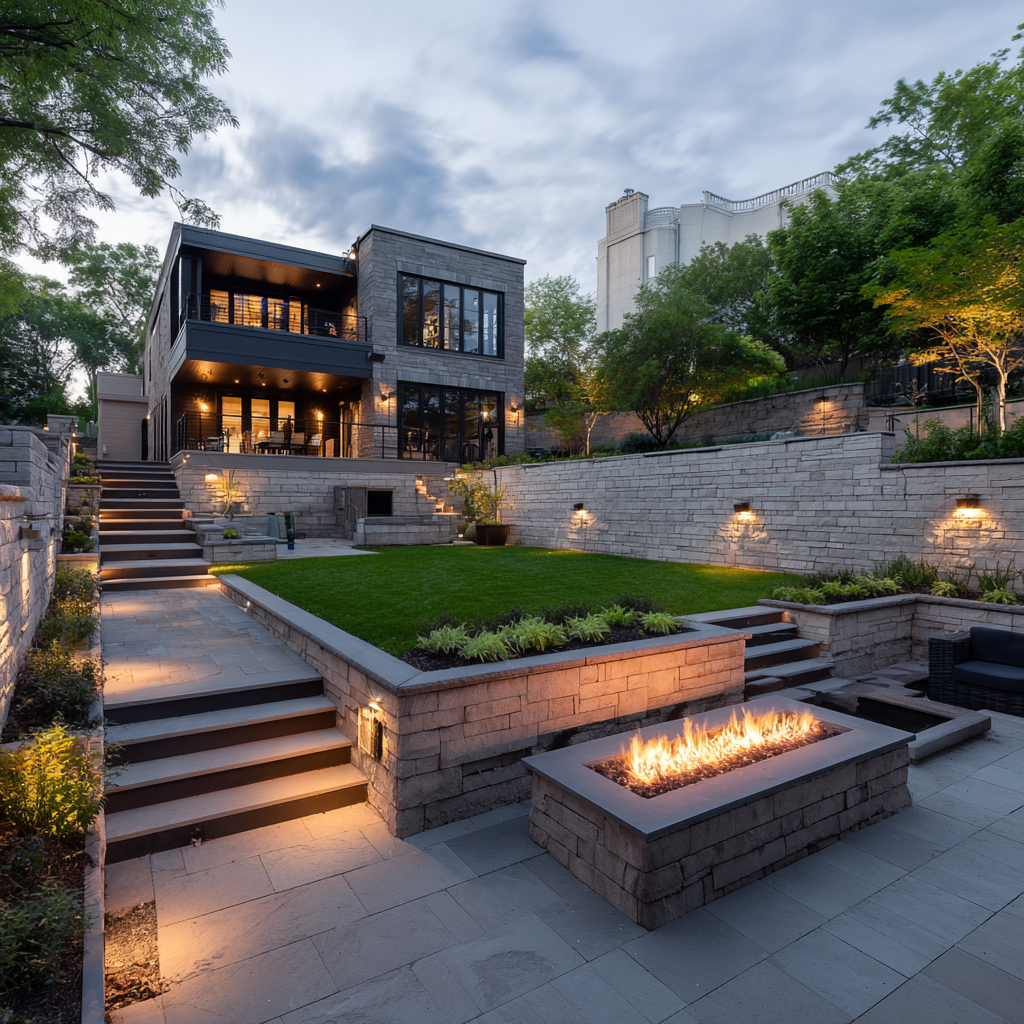
Bringing It All Together: Slopes as Opportunities
Sloped yards can feel intimidating, but they’re not obstacles—they’re opportunities. With retaining walls to create structure, grading and drainage to provide stability, and thoughtful design to bring it all together, you can turn a steep hill into the best part of your property.
From Minnetonka’s lakefront hillsides to urban slopes in Minneapolis and historic neighborhoods in Edina, the principles are the same: what looks like wasted space can become your greatest outdoor asset.
Pro Tip: Slopes don’t have to be liabilities. With the right design, they’re your property’s greatest hidden asset.
Ready to turn your Minnetonka slope into a safe, flat, livable backyard? Let’s design a solution that makes the most of your land and protects your investment for decades.
FAQs
How much does it cost to reclaim a sloped backyard in Minnetonka?
Costs vary depending on wall size, materials, and drainage requirements, but homeowners should expect slope projects to start in the tens of thousands. Large walls or multi-tiered terraces can reach six figures. While the price is significant, the value comes in both daily usability and resale. Families with children or those planning to sell in the future see some of the strongest returns.
Do retaining walls require permits in Minnetonka?
Yes. In most cities, including Minnetonka, walls over four feet in height require permits and often engineering plans. This ensures walls meet structural requirements for soil pressure and drainage. Homeowners should never attempt large walls without professional design and permitting, as improper walls can fail quickly and create liability issues.
How long do professionally installed walls and terraces last?
When properly engineered with drainage, retaining walls in Minnetonka typically last 30 to 50 years or more. They don’t suddenly crumble. Instead, over decades you may notice caps shifting, sections settling slightly, or minor leaning as soil pressure and freeze-thaw cycles take their toll. These aren’t catastrophic failures—they’re maintenance opportunities. A well-built wall can usually be repaired by re-leveling a section, replacing a few blocks, or clearing drainage outlets. With inspections every few years and occasional small fixes, a retaining wall can perform for generations without major reconstruction.
What are the best materials for retaining walls in Minnesota’s climate?
Modular concrete block is one of the most durable options, designed for freeze-thaw cycles. Natural stone offers unmatched beauty, especially near wooded lots or lakefront properties, but may require more engineering for stability. Timber walls are less expensive but shorter-lived, making them a poor choice for long-term investments.
Can slope landscaping be phased over time to spread out cost?
Yes. Many homeowners start with the most critical section—often the slope nearest the house where water issues are worst—and add terraces or patios later. The key is designing the master plan up front. That way, each phase supports the next and prevents tearing out completed work.
How does slope landscaping affect property value in Minnetonka?
It adds measurable value. Homes with reclaimed slopes appeal strongly to buyers who want usable outdoor space. A once-steep backyard becomes a functional extension of the home. By transforming a property that might otherwise feel limiting, you create something rare in the market—an improved home on a hillside lot.
What happens if drainage isn’t addressed when fixing a slope?
Walls without drainage are the most common point of failure. Hydrostatic pressure builds behind the wall, eventually pushing it outward. Drain tile, gravel backfill, and grading are non-negotiable parts of slope work. Without them, even the most expensive walls won’t last.

